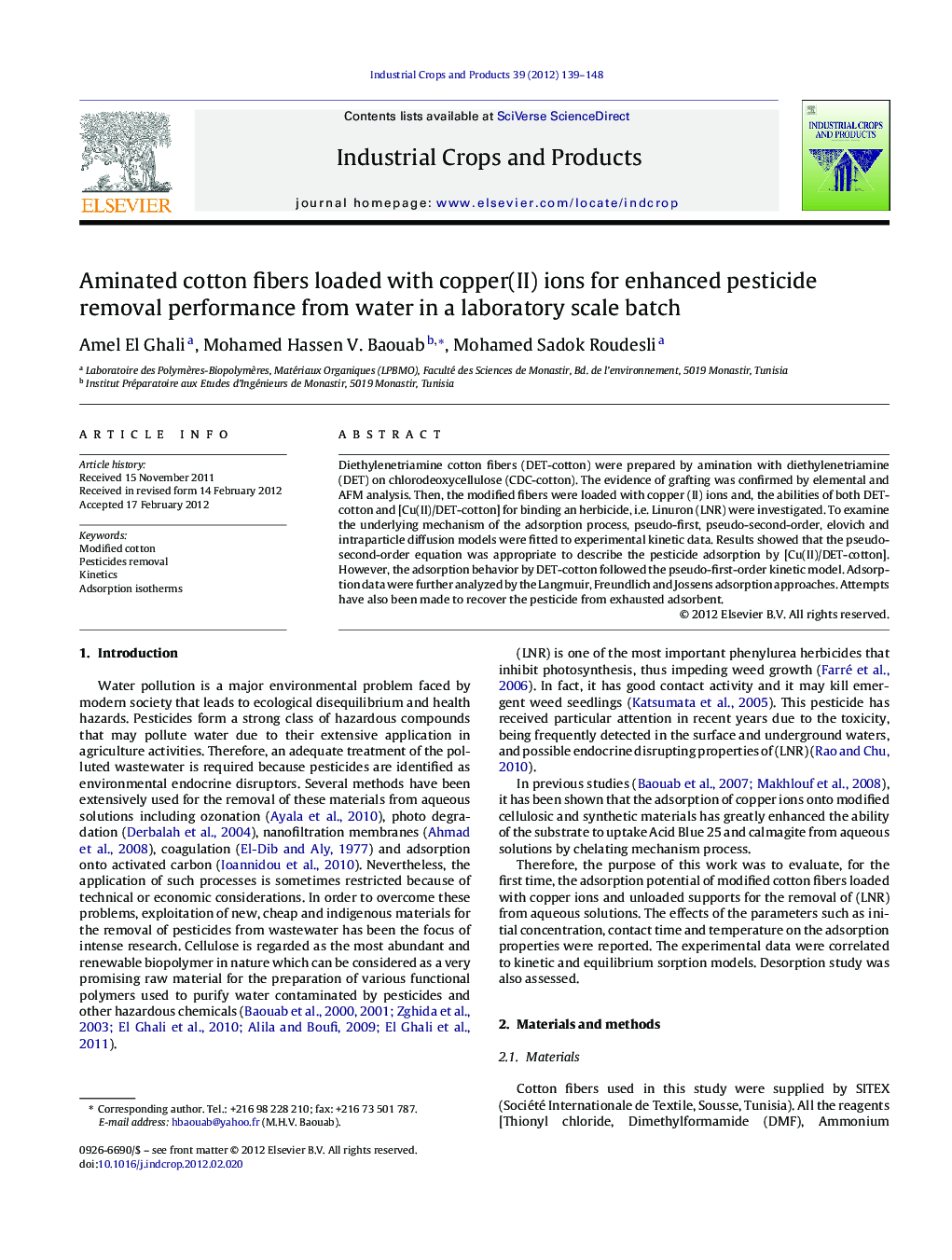| کد مقاله | کد نشریه | سال انتشار | مقاله انگلیسی | نسخه تمام متن |
|---|---|---|---|---|
| 4514326 | 1624870 | 2012 | 10 صفحه PDF | دانلود رایگان |

Diethylenetriamine cotton fibers (DET-cotton) were prepared by amination with diethylenetriamine (DET) on chlorodeoxycellulose (CDC-cotton). The evidence of grafting was confirmed by elemental and AFM analysis. Then, the modified fibers were loaded with copper (II) ions and, the abilities of both DET-cotton and [Cu(II)/DET-cotton] for binding an herbicide, i.e. Linuron (LNR) were investigated. To examine the underlying mechanism of the adsorption process, pseudo-first, pseudo-second-order, elovich and intraparticle diffusion models were fitted to experimental kinetic data. Results showed that the pseudo-second-order equation was appropriate to describe the pesticide adsorption by [Cu(II)/DET-cotton]. However, the adsorption behavior by DET-cotton followed the pseudo-first-order kinetic model. Adsorption data were further analyzed by the Langmuir, Freundlich and Jossens adsorption approaches. Attempts have also been made to recover the pesticide from exhausted adsorbent.
► Removal of Linuron was performed by using modified cotton fibers loaded with Cu(II).
► The Cu(II) incorporation deals with a significant enhancement of the herbicide uptake.
► Four Kinetic models were used to study the underlying mechanism of adsorption process.
► Equilibrium data were described by the Langmuir, Freundlich, and Jossens models.
► Desorption tests were also investigated in this work.
Journal: Industrial Crops and Products - Volume 39, September 2012, Pages 139–148